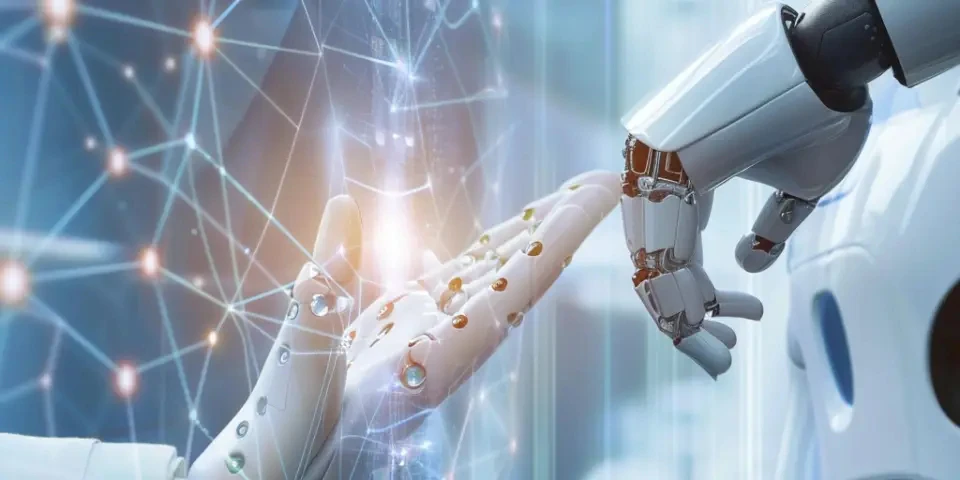The Rise of RoboAI in Everyday Life Transforming Automation for Individuals
In recent years, the integration of robotics and artificial intelligence (RoboAI) has gained momentum and has become increasingly prevalent in our everyday lives. This fusion of technologies has revolutionized automation across various industries, bringing about significant changes to how individuals work, live, and interact. In this article, we will explore the numerous ways in which RoboAI is transforming the world around us.
1. RoboAI in Healthcare
RoboAI has the potential to revolutionize healthcare by enhancing diagnostic capabilities, streamlining medical procedures, and even assisting in surgery. Automated robots equipped with AI algorithms can analyze medical images, detect anomalies, and provide accurate diagnoses. Additionally, robotic assistance during surgeries can lead to improved precision and reduced risks.

Furthermore, RoboAI can facilitate remote patient monitoring, allowing healthcare professionals to remotely track vital signs and intervene in emergencies. This technology has proven particularly valuable in rural areas or for individuals with limited access to healthcare facilities.
2. RoboAI in Transportation
The transportation industry has witnessed a tremendous transformation with the introduction of RoboAI. Self-driving cars, powered by advanced AI algorithms, are becoming increasingly common on the roads. These vehicles are capable of navigating complex traffic situations, analyzing road conditions, and ensuring passenger safety.
Additionally, AI-powered drones are revolutionizing the delivery industry, enabling faster, more efficient delivery of goods. These autonomous drones can navigate urban environments and execute deliveries with unparalleled accuracy and speed.
3. RoboAI in Manufacturing
The integration of robotics and AI has revolutionized the manufacturing industry, leading to increased productivity and cost-effectiveness. Robotic arms equipped with AI algorithms can perform complex tasks with precision and efficiency, reducing the need for human intervention.
Moreover, these AI-powered robots can adapt to changing production demands, optimize workflows, and identify potential bottlenecks, further streamlining the manufacturing process. This not only enhances productivity but also ensures consistent product quality.
4. RoboAI in Personal Assistants
Virtual personal assistants, such as Amazon's Alexa or Apple's Siri, have become ubiquitous in households worldwide. These AI-powered assistants employ natural language processing and machine learning algorithms to respond to users' queries, perform tasks, and even anticipate their needs.
With voice recognition technology, personal assistants can control smart home devices, provide personalized recommendations, schedule appointments, and facilitate various everyday tasks with ease. Their integration with RoboAI continues to enhance their capabilities, making them more intuitive and efficient.
5. RoboAI in Education
Education is another arena where RoboAI is making significant strides. AI-powered tutoring platforms can adapt to individual learning styles, assess knowledge gaps, and provide personalized feedback and recommendations. This enables learners to have a customized learning experience that optimizes their understanding and retention of information.
Furthermore, robots have started to play a role in classrooms, assisting teachers in managing administrative tasks, providing real-time feedback to students, and even facilitating interactive learning experiences. These AI-powered educational assistants aim to enhance learning outcomes and improve engagement among students.
6. RoboAI in Agriculture
The agriculture industry is being transformed by RoboAI, enabling farmers to optimize their crop yields and reduce resource wastage. AI-powered robots can autonomously monitor crop health, identify potential diseases or pests, and deliver precise interventions. This leads to more efficient use of fertilizers, pesticides, and water.
Moreover, robotic automation in agriculture can perform labor-intensive tasks, such as harvesting, with remarkable speed and accuracy. This not only alleviates the burden on farmers but also ensures that crops are harvested at optimal times, maximizing their quality and market value.
7. RoboAI in Entertainment
Entertainment is an industry that has benefitted from RoboAI in numerous ways. Virtual reality (VR) and augmented reality (AR) technologies, powered by AI algorithms, have revolutionized gaming experiences, bringing users into immersive and interactive worlds.
Additionally, AI algorithms can analyze users' entertainment preferences and provide personalized content recommendations across various streaming platforms. This enhances the user experience and ensures that individuals discover new shows, movies, or music that align with their tastes.
Frequently Asked Questions:
Q: Is RoboAI a threat to job security?
A: While RoboAI does automate certain tasks, it also opens up new job opportunities. Rather than replacing entire professions, RoboAI often augments human capabilities, leading to new roles that require human supervision, maintenance, and creativity.
Q: How safe are self-driving cars?
A: Self-driving cars undergo rigorous testing to ensure safety. They employ a combination of sensors, cameras, and AI algorithms to analyze the environment. However, challenges such as unpredictable road conditions or sudden obstacles still exist, and further advancements in AI are necessary to enhance safety measures.
Q: Can RoboAI completely replace human teachers?
A: While AI-powered educational tools can support teachers, human interaction remains crucial for effective education. The presence of human teachers is essential for fostering critical thinking, emotional intelligence, and personalized guidance.
Explore your companion in WeMate